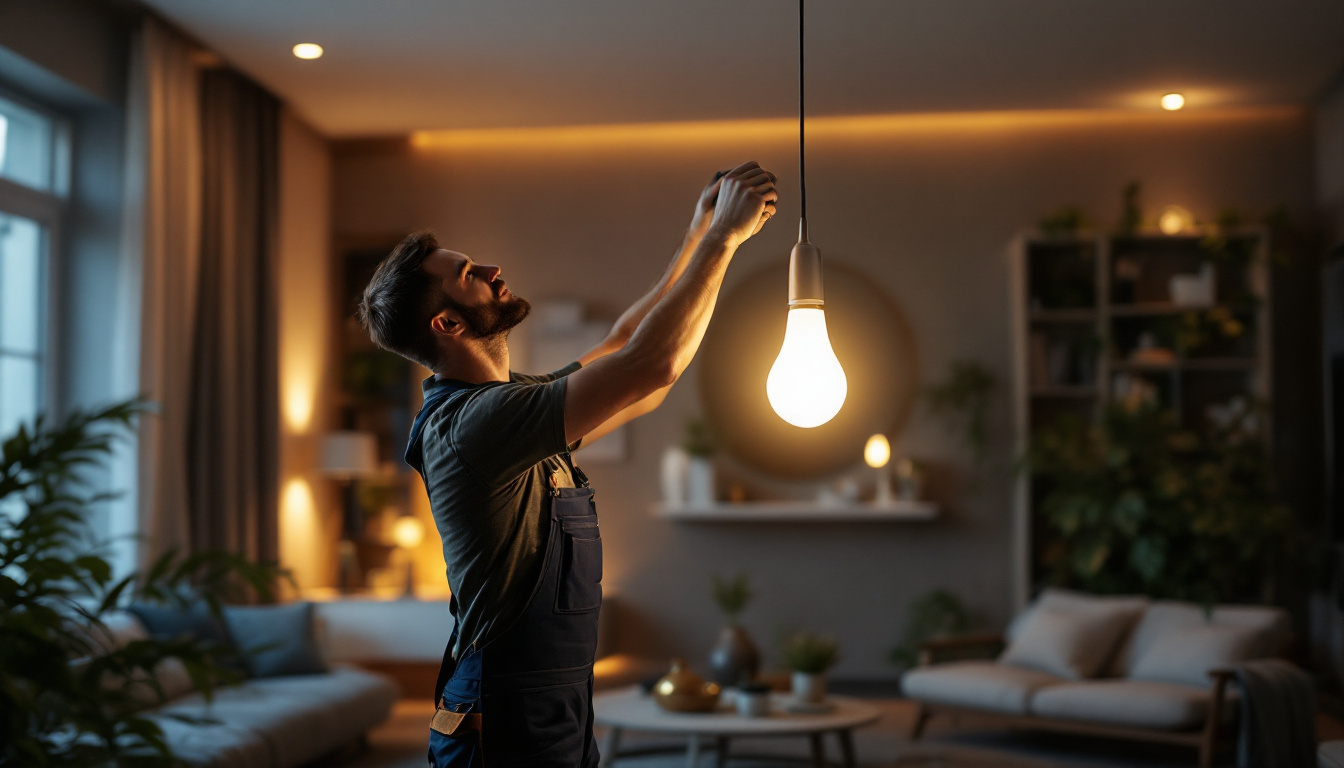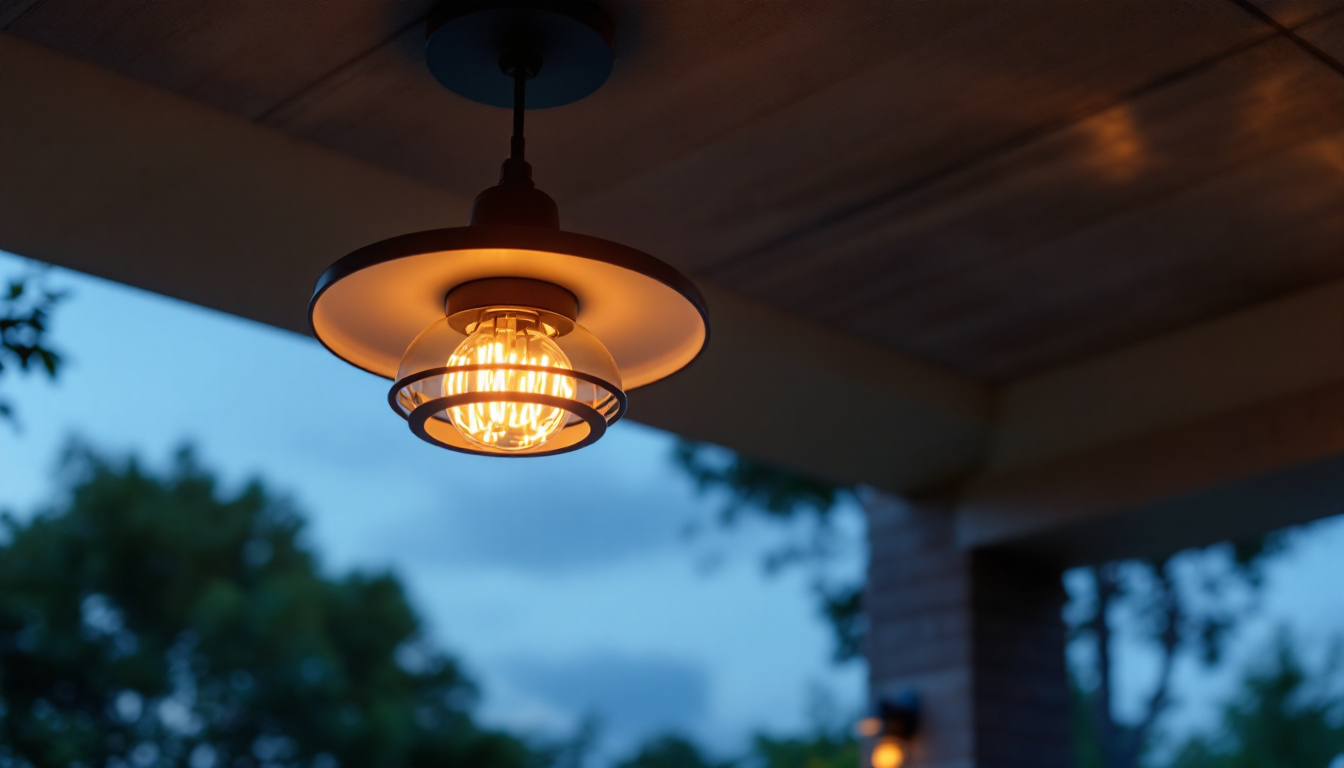
As outdoor lighting technology continues to evolve, motion sensor lighting has become a popular choice for both residential and commercial properties. For lighting contractors, understanding the intricacies of motion sensor outdoor lighting is essential for providing clients with effective and energy-efficient solutions. This guide aims to explore the benefits, installation considerations, and maintenance of motion sensor outdoor lighting systems.
Motion sensor lighting utilizes advanced technology to detect movement within a designated area. This system is designed to automatically turn on lights when motion is detected and turn them off after a set period of inactivity. Understanding the various types of motion sensors and their applications is crucial for lighting contractors.
There are primarily three types of motion sensors used in outdoor lighting: passive infrared (PIR), ultrasonic, and dual technology sensors. Each type has its unique characteristics and applications.
Motion sensor outdoor lighting serves various purposes, making it a versatile choice for many environments. Common applications include:
In addition to these applications, motion sensor lighting can also enhance the aesthetic appeal of outdoor spaces. By strategically placing lights along walkways, gardens, or architectural features, homeowners can create a warm and inviting atmosphere during the evening hours. Furthermore, these lights can be integrated with smart home systems, allowing for remote control and customization of lighting settings. This integration not only adds convenience but also enables users to monitor their property from afar, providing peace of mind when they are away.
Moreover, the adaptability of motion sensor technology extends beyond residential use. Commercial properties, such as parking lots and retail spaces, benefit significantly from motion sensor lighting. In these environments, the ability to illuminate areas only when necessary not only enhances safety for customers and employees but also contributes to substantial cost savings on energy bills. As businesses increasingly prioritize sustainability, the implementation of motion sensor lighting systems aligns with their goals of reducing their carbon footprint while maintaining a secure and welcoming environment.
Incorporating motion sensor lighting into outdoor spaces offers numerous benefits that can enhance both safety and aesthetic appeal. Understanding these advantages can help contractors make informed recommendations to clients.
One of the primary benefits of motion sensor outdoor lighting is its ability to enhance security. By illuminating dark areas when movement is detected, these lights serve as a deterrent to potential intruders. The sudden activation of lights can startle unwanted visitors, making them think twice before proceeding.
Moreover, strategically placed motion sensor lights can cover vulnerable spots around a property, such as entryways, garages, and backyards. This added layer of security not only protects the property but also provides peace of mind for homeowners.
Another significant advantage is the energy efficiency that motion sensor lighting offers. Traditional outdoor lighting systems often remain on throughout the night, leading to increased energy consumption and higher utility bills. In contrast, motion sensor lights activate only when needed, significantly reducing energy usage.
For clients concerned about their carbon footprint, recommending energy-efficient motion sensor lighting can be an attractive selling point. Additionally, many modern motion sensor lights use LED technology, further enhancing energy savings while providing bright illumination.
Motion sensor lights improve safety by illuminating pathways and driveways, reducing the risk of accidents in low-light conditions. Homeowners and visitors can navigate outdoor spaces more easily, avoiding potential hazards.
Furthermore, the convenience of having lights automatically turn on when someone approaches can be particularly beneficial for elderly clients or those with mobility challenges. This feature allows for a more accessible and user-friendly outdoor environment.
Proper installation is crucial for the effective functioning of motion sensor outdoor lighting. Contractors should consider several factors to ensure optimal performance and client satisfaction.
Choosing the right location for motion sensor lights is essential. Sensors should be placed where they can effectively detect movement without being obstructed by trees, walls, or other structures. A common practice is to install lights at a height of 6 to 8 feet to maximize coverage while minimizing false triggers.
Contractors should also consider the coverage area of the sensors. Different models have varying detection ranges, so selecting lights that suit the specific needs of the property is vital. For larger areas, multiple sensors may be necessary to ensure comprehensive coverage.
When installing motion sensor lighting, contractors must pay attention to the wiring and power supply. Most outdoor lights require a direct connection to the electrical system, which may involve running new wiring. It is essential to adhere to local electrical codes and regulations during installation.
Additionally, some motion sensor lights are solar-powered, offering a more sustainable option. These lights are easier to install since they do not require extensive wiring, but contractors should ensure that the solar panels receive adequate sunlight for optimal performance.
Many motion sensor lights come with adjustable settings that allow users to customize the sensitivity, duration, and light level. Contractors should familiarize themselves with these settings to guide clients on how to optimize their lighting systems.
For instance, adjusting the sensitivity can help reduce false triggers caused by pets or passing vehicles. Similarly, setting the duration for how long the lights remain on after detecting motion can enhance convenience without wasting energy.
Regular maintenance is essential to ensure that motion sensor outdoor lighting systems continue to function effectively over time. Contractors should advise clients on proper maintenance practices to prolong the lifespan of their lighting systems.
Over time, dirt, dust, and debris can accumulate on the sensors and light fixtures, hindering their performance. Regular cleaning is necessary to ensure that the sensors can detect movement accurately. Clients should be encouraged to clean the fixtures and lenses periodically using a soft cloth and mild detergent.
Additionally, conducting routine inspections of the wiring and connections can help identify potential issues before they become significant problems. Checking for signs of wear and tear or corrosion is essential for maintaining the integrity of the lighting system.
For solar-powered motion sensor lights or those with battery backups, regular battery replacement is necessary to ensure uninterrupted operation. Contractors should inform clients about the expected lifespan of the batteries and recommend replacement schedules to avoid unexpected outages.
As technology advances, newer and more efficient motion sensor lighting options become available. Contractors should stay informed about the latest developments in motion sensor technology and recommend upgrades when appropriate. This not only enhances the performance of the lighting system but also provides clients with the best possible solutions for their outdoor spaces.
Despite their reliability, motion sensor outdoor lighting systems can encounter issues from time to time. Understanding common problems and their solutions can help contractors provide effective support to clients.
One of the most common issues with motion sensor lights is false triggering. This can occur due to pets, passing vehicles, or even changes in temperature. Adjusting the sensitivity settings can often resolve this issue. Additionally, repositioning the sensor to reduce exposure to these triggers can help minimize false activations.
If the lights do not activate when motion is detected, several factors may be at play. First, check the power supply and ensure that the lights are correctly wired or that the batteries are functioning. If the sensor is obstructed or dirty, cleaning it may restore functionality.
In some cases, the sensor may need to be recalibrated or replaced if it is malfunctioning. Contractors should be prepared to troubleshoot these issues and provide solutions to clients.
Inconsistent performance can be frustrating for clients. If the lights activate sporadically or fail to stay on for the desired duration, it may be necessary to adjust the settings. Additionally, checking for obstructions or interference from nearby objects can help improve performance.
Motion sensor outdoor lighting presents an array of benefits, from enhanced security to energy savings and improved convenience. For lighting contractors, understanding the technology, installation considerations, and maintenance practices associated with these systems is essential for delivering quality service to clients.
By staying informed about the latest advancements in motion sensor technology and addressing common issues, contractors can ensure that their clients enjoy the full advantages of motion sensor outdoor lighting. As demand for energy-efficient and secure outdoor lighting solutions continues to rise, contractors who specialize in this area will be well-positioned to meet the needs of their clients.
Ready to elevate your lighting projects with the latest in motion sensor technology? Look no further than LumenWholesale for all your outdoor lighting needs. Our extensive selection of spec-grade lighting products ensures you have access to the most reliable and high-performing options on the market. With unbeatable wholesale prices and the convenience of free shipping on bulk orders, you can provide your clients with the perfect blend of security, energy efficiency, and convenience without breaking the bank. Wholesale Lighting at the Best Value is just a click away. Discover the LumenWholesale difference today!

Discover the pitfalls lighting contractors often face with outdoor dawn-to-dusk lighting installations.

Explore the transformative role of stair lighting in modern design projects and discover how it challenges and inspires lighting contractors.

Discover how choosing the right lamp bulbs can illuminate new business opportunities for lighting contractors.

Discover how lighting contractors can enhance their projects and profitability by incorporating outdoor ceiling fixtures.